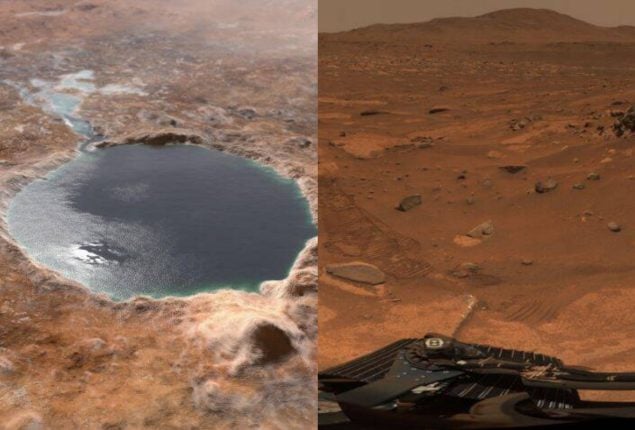NASA Explores Astronaut Hibernation for Future Space Travel
NASA tests hibernation in microgravity with "STASH." Led by Ryan Sprenger, Fauna...

NASA Discovers Ancient Lake, Sparks Hope for Traces of Life
In a groundbreaking discovery, NASA’s Perseverance rover has confirmed the existence of ancient lake sediments in Mars’ Jerezo Crater, fueling hopes of finding traces of ancient microbial life. The study, led by teams from the University of California at Los Angeles (UCLA) and the University of Oslo, utilized ground-penetrating radar observations to reveal the presence of soil sediments deposited by water, supporting previous orbital imagery suggesting Mars was once warm, wet, and potentially habitable.
The research, published in the journal Science Advances, focused on subsurface scans taken by the car-sized rover as it traversed the Martian surface, revealing sedimentary-like features resembling river deltas on Earth. The rover’s RIMFAX radar instrument provided crucial data by allowing scientists to examine rock layers up to 65 feet (20 meters) deep, showcasing clear evidence of water-carried soil sediments at Jerezo Crater.
The findings validate the long-standing hypothesis that portions of Mars were once covered in water, offering a glimpse into the planet’s ancient geological history. The discovery raises hopes for potential traces of ancient microbial life, with scientists eagerly awaiting an up-close examination of Jerezo’s sediments, believed to have formed around 3 billion years ago, through samples collected by Perseverance for future transport to Earth.
The study also complements earlier surprises from the rover’s analysis of core samples, revealing volcanic rocks instead of the expected sedimentary composition. However, even these volcanic rocks showed signs of alteration through exposure to water, suggesting a dynamic and complex geological history. The RIMFAX radar readings unveiled signs of erosion, further emphasizing the intricate processes shaping the Martian landscape.
“This is a happy story in that respect,” remarked UCLA planetary scientist David Paige. The confirmation of ancient lake sediments at Jerezo Crater marks a significant milestone in NASA’s mission, reaffirming scientists’ strategic choice of location and sparking renewed enthusiasm for uncovering the mysteries of Mars’ past and the possibility of ancient life on the Red Planet.
Catch all the Sci-Tech News, Breaking News Event and Latest News Updates on The BOL News
Download The BOL News App to get the Daily News Update & Follow us on Google News.